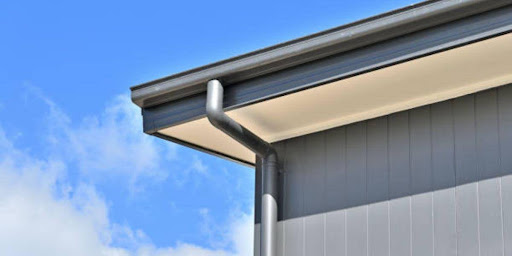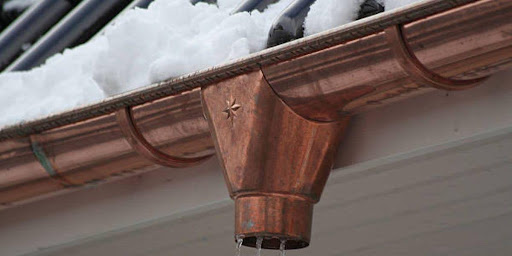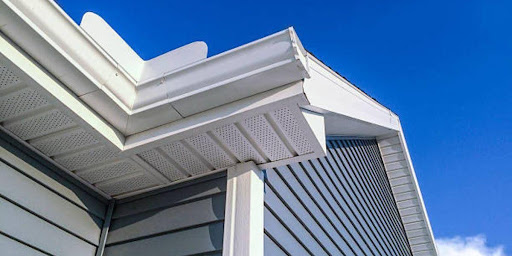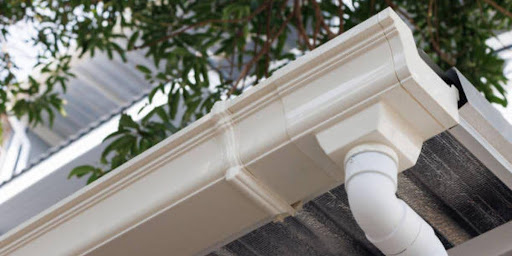Power Articles
Industry Elevating Content
Gutter Materials Compared: Aluminum, Copper, or Vinyl - Which is Best?

PowerArticles
Mar. 25, 2024
Choosing the right gutter materials is crucial for the longevity and efficiency of a home’s exterior. Gutters play a vital role in directing rainwater away from the foundation and protecting the structural integrity of a house. For exterior home remodeling companies, understanding the differences between gutter materials is essential to advise clients accurately and ensure the longevity of their work. This article focuses on three popular gutter materials: aluminum, copper, and vinyl, comparing their advantages and disadvantages to help make an informed decision.
Understanding Gutter Materials
Gutters are more than just channels that collect rainwater; they are a critical component of a home’s weather protection system. The right gutter material can prevent a host of problems, including soil erosion, basement flooding, and siding damage.
When selecting gutter materials, several factors need to be considered. Durability is paramount, as gutters should withstand harsh weather conditions without corroding or cracking. Cost is another significant factor, as budget constraints often dictate the choice of materials. Aesthetics cannot be overlooked either, as gutters should complement the home’s exterior design. Finally, maintenance requirements should be considered, as some materials may require more upkeep than others.
Aluminum Gutters
Aluminum gutters are a popular choice among homeowners and remodeling companies alike due to their combination of durability, affordability, and ease of installation. One of the main advantages of aluminum gutters is their resistance to rust, ensuring a longer lifespan compared to steel gutters. They are also lightweight, making them easier to handle and install, which can reduce labor costs. Aluminum gutters come in a wide range of colors and can be painted to match any home exterior, offering flexibility in design.
However, there are some disadvantages to consider. Aluminum gutters are prone to denting from heavy impacts, such as falling branches or ladders leaning against them. Although they are durable, they may not be the best choice in areas prone to severe weather conditions, as they can be damaged more easily than heavier materials.

Copper Gutters
Copper gutters are known for their exceptional durability and aesthetic appeal. They can last up to 50 years or more with minimal maintenance, making them an excellent long-term investment. Copper develops a patina over time, giving it a distinctive look that can add character and value to a home. This material is also highly resistant to corrosion and can withstand extreme weather conditions, making it suitable for any climate.
The primary disadvantage of copper gutters is their cost. Copper is significantly more expensive than aluminum or vinyl, making it a less accessible option for some homeowners. Additionally, the installation of copper gutters requires specialized skills and tools, potentially increasing labor costs. Despite these drawbacks, copper gutters can be an attractive option for high-end projects or historic home renovations, where quality and aesthetics are paramount.

Vinyl Gutters
Advantages
One of the most significant benefits of vinyl gutters is their cost-effectiveness. They are among the most affordable gutter options on the market, making them an attractive choice for budget-conscious homeowners. Additionally, vinyl gutters are lightweight and easy to install, which can reduce labor costs and time. This ease of installation makes them a popular choice for DIY projects as well. Vinyl gutters come in a wide range of colors, allowing for seamless integration with a home’s exterior design. They are also resistant to rust and corrosion, which contributes to their longevity in mild climates.
Disadvantages
Despite their benefits, vinyl gutters have some limitations. One of the main drawbacks is their durability in extreme weather conditions. Vinyl can become brittle and crack in cold temperatures, while intense heat can cause it to warp. This susceptibility to weather-related damage means that vinyl gutters may not be the best choice for homes in areas with harsh climates. Additionally, while vinyl gutters are low maintenance, their color can fade over time due to prolonged exposure to sunlight, potentially affecting the home’s aesthetic appeal.

Comparison of Materials
Comparing aluminum, copper, and vinyl gutters involves examining key factors such as durability, cost, maintenance, and aesthetics. Aluminum gutters are lightweight, resistant to rust, and available in various colors, making them a versatile choice for many homes. However, they can dent easily. Copper gutters offer exceptional durability and a unique aesthetic appeal as they develop a patina over time, but they come with a higher price tag and require professional installation. Vinyl gutters are the most cost-effective option, easy to install, and come in many colors. Yet, they may not withstand extreme weather conditions as well as metal options and can become brittle over time.
Cost-Benefit Analysis
When conducting a cost-benefit analysis of gutter materials, it’s essential to consider both the initial investment and long-term value. Aluminum gutters provide a balance between affordability and durability, making them a cost-effective choice for those on a budget. Copper gutters, while expensive upfront, offer unparalleled longevity and can enhance a home’s value, potentially offering a higher return on investment in the long run. Vinyl gutters are the least expensive and offer a quick solution for budget-conscious projects, but they may need to be replaced more frequently than metal options, which could increase long-term costs.
Environmental Impact
Environmental considerations are increasingly important in home remodeling decisions. Aluminum gutters are often made from recycled materials, making them a more eco-friendly option. They can also be recycled at the end of their life, reducing landfill waste. Copper gutters have a long lifespan, which means less frequent replacement and, consequently, a lower environmental impact over time. However, the mining and processing of copper can be energy-intensive. Vinyl gutters, while not typically made from recycled materials, offer an affordable option but are less environmentally friendly due to their plastic composition and shorter lifespan.

Recommendations for Remodeling Companies
For exterior home remodeling companies, recommending the right gutter material involves balancing the client’s budget, aesthetic preferences, and maintenance willingness. Companies should:
- Educate clients on the long-term value of investing in durable materials like copper for homes in areas with severe weather conditions or for those seeking a distinctive look.
- Suggest aluminum gutters for a wide range of projects due to their versatility, color options, and balance between cost and durability.
- Recommend vinyl gutters for quick, cost-effective installations, particularly in milder climates or for temporary solutions.
Ultimately, the choice of gutter material should align with the homeowner’s priorities and the specific needs of the property. By providing comprehensive information and expert recommendations, remodeling companies can help their clients make informed decisions that enhance the functionality and appearance of their homes.
Conclusion
When it comes to choosing gutter materials for home exterior projects, exterior home remodeling companies must consider a variety of factors, including durability, cost, aesthetics, and maintenance requirements. Aluminum, copper, and vinyl gutters each offer unique advantages and disadvantages that cater to different homeowner needs and preferences. Educating clients on the pros and cons of different gutter materials enables them to make informed decisions that best suit their homes’ needs and their budgets.
Published By
PowerArticles
Mar. 25, 2024